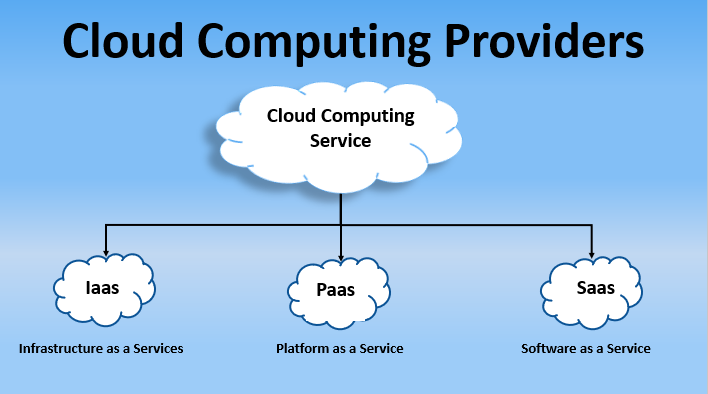Comprehensive Cloud Services: Boost Performance and Security for Your Firm
Comprehensive Cloud Services: Boost Performance and Security for Your Firm
Blog Article
Achieve Seamless Scalability With Cloud Solutions
In the ever-evolving landscape of cloud solutions, attaining seamless scalability stands as a keystone for contemporary organizations looking for to remain versatile and affordable. The mission for seamless scalability with cloud services reveals a globe of opportunities for those prepared to welcome the transformative power of dynamic resource management.
Benefits of Cloud Scalability
Cloud scalability offers organizations the adaptability to dynamically change resources based on demand, ensuring optimum efficiency and expense effectiveness. Furthermore, cloud scalability promotes innovation and trial and error by allowing organizations to quickly evaluate new concepts and range them as needed. Ultimately, the advantages of cloud scalability prolong beyond expense financial savings to include enhanced efficiency, dexterity, and advancement.
Key Functions for Scaling
Reliable scaling in cloud services relies on crucial attributes that allow companies to change sources dynamically based on demand. One vital function for scaling is flexibility, allowing resources to scale up or down in feedback to rising and fall work. This makes certain that organizations can fulfill performance requirements without over-provisioning sources. Another crucial function is scalability, enabling systems to take care of boosted work by including sources seamlessly. This feature is essential for suiting growth without jeopardizing efficiency. In addition, automation plays an important function in scaling by automating the provisioning and de-provisioning of sources based upon predefined policies. Automation minimizes human treatment, improves performance, and makes certain quick action to transforming needs. Tracking and analytics tools are likewise important for scaling, providing insights right into source usage, efficiency metrics, and prospective bottlenecks. These devices allow organizations to make enlightened decisions and optimize source appropriation for reliable scaling. Overall, these essential features jointly encourage companies to accomplish smooth scalability in cloud services.
Executing Auto-Scaling Methods
To efficiently optimize source allotment and adapt to differing workloads, organizations have to strategically implement auto-scaling techniques in their cloud services facilities. Auto-scaling allows systems to automatically change the number of compute resources based on real-time demand. There are various auto-scaling methods that companies can employ, such as predictive scaling, which uses historical data to anticipate future resource requirements, and responsive scaling, which reacts to existing workload modifications.

Ideal Practices for Scalability
For companies aiming to boost their scalability in cloud solutions, implementing ideal techniques is essential for optimum performance and source administration. One key finest practice is developing applications with a microservices style. This approach breaks down applications into smaller, independent services that can be released, updated, and scaled independently, permitting better adaptability and scalability.
Another essential method is making use of containerization technology, such as Docker or Kubernetes. Containers make it possible for the product packaging of applications and their reliances into separated systems, making it simpler to scale components individually and deploy them consistently across various settings.
In addition, applying automated deployment and framework as code (IaC) can streamline scalability initiatives (linkdaddy cloud services). Automation tools like Terraform or Ansible help in provisioning and handling resources successfully, minimizing hands-on mistakes and enabling rapid scalability
In addition, keeping track of efficiency metrics, establishing up notifies, and carrying out normal ability planning are necessary practices to make sure proactive scalability administration. By sticking to these best methods, companies can accomplish smooth scalability in their cloud services while enhancing efficiency and source utilization.
Tracking Efficiency Metrics
When assessing the efficiency of cloud solutions scalability, carefully checking performance metrics is critical for making certain optimal capability and resource allotment. By continuously tracking vital efficiency indicators navigate to these guys (KPIs) such as feedback times, resource, throughput, and latency usage, companies can get useful insights into the wellness and performance of their cloud infrastructure. Monitoring performance metrics enables the early discovery of possible traffic jams or problems that could influence scalability, allowing proactive procedures to be taken to address them before they rise.

Final Thought
To conclude, achieving smooth scalability with cloud solutions is important for companies to maximize performance, enhance advancement, and preserve high performance degrees during peak times. By leveraging the benefits of cloud scalability, implementing auto-scaling strategies, making use of crucial functions such as elasticity and automation, and complying with best techniques like application layout and efficiency surveillance, services can successfully scale their systems while optimizing source utilization and performance.
The quest for seamless scalability with cloud solutions unveils a globe of possibilities for those ready to welcome the transformative power of vibrant resource monitoring.
Cloud scalability uses companies the versatility to dynamically adjust sources based on need, ensuring optimum performance and price effectiveness. Another key function is scalability, enabling systems to deal with increased work by including sources seamlessly.For organizations aiming to improve their scalability in cloud services, executing best techniques is essential for optimum efficiency and resource monitoring.When analyzing the efficiency of cloud services scalability, very closely keeping track of efficiency metrics is important for making certain optimal performance and resource allotment.
Report this page